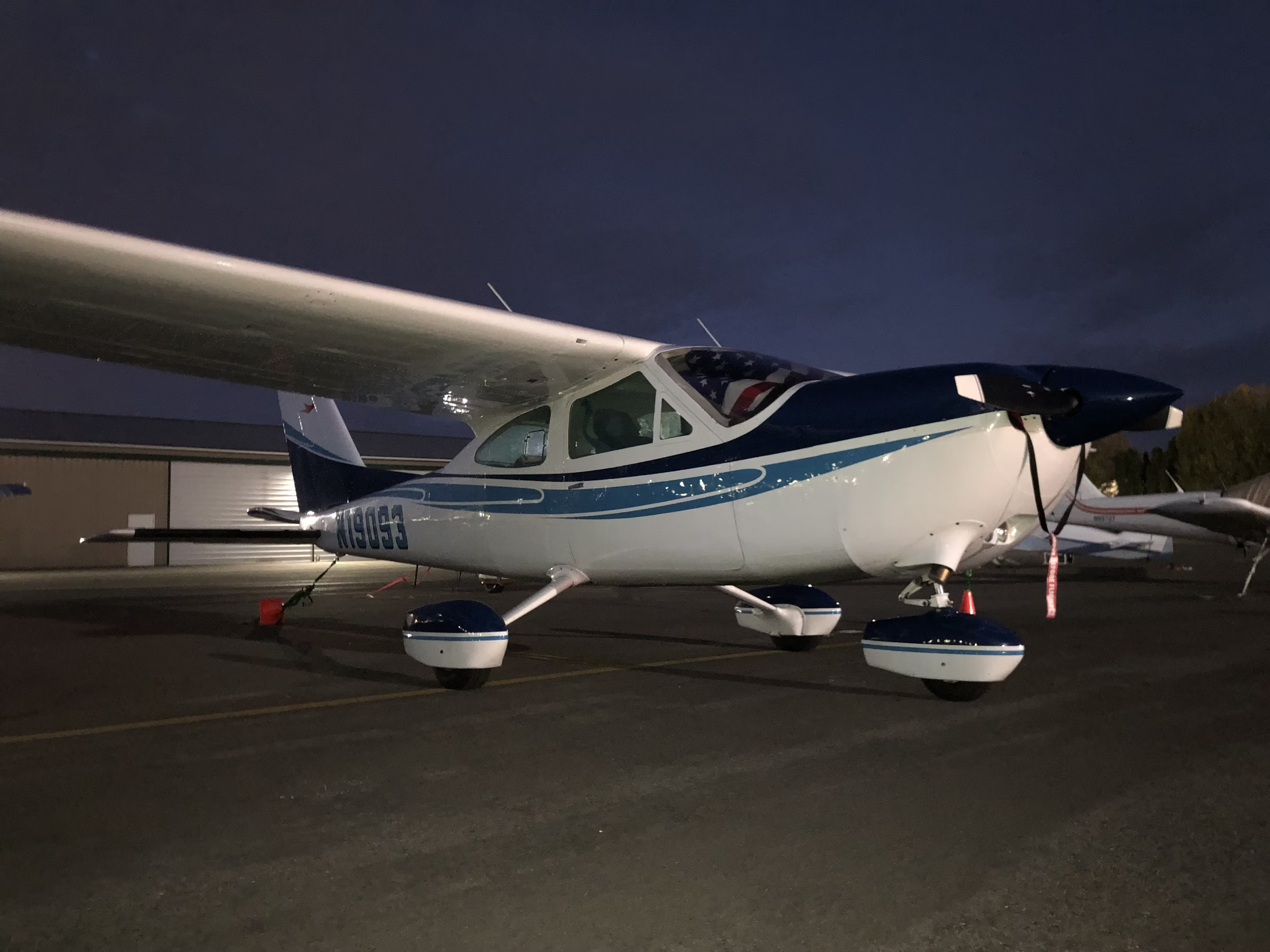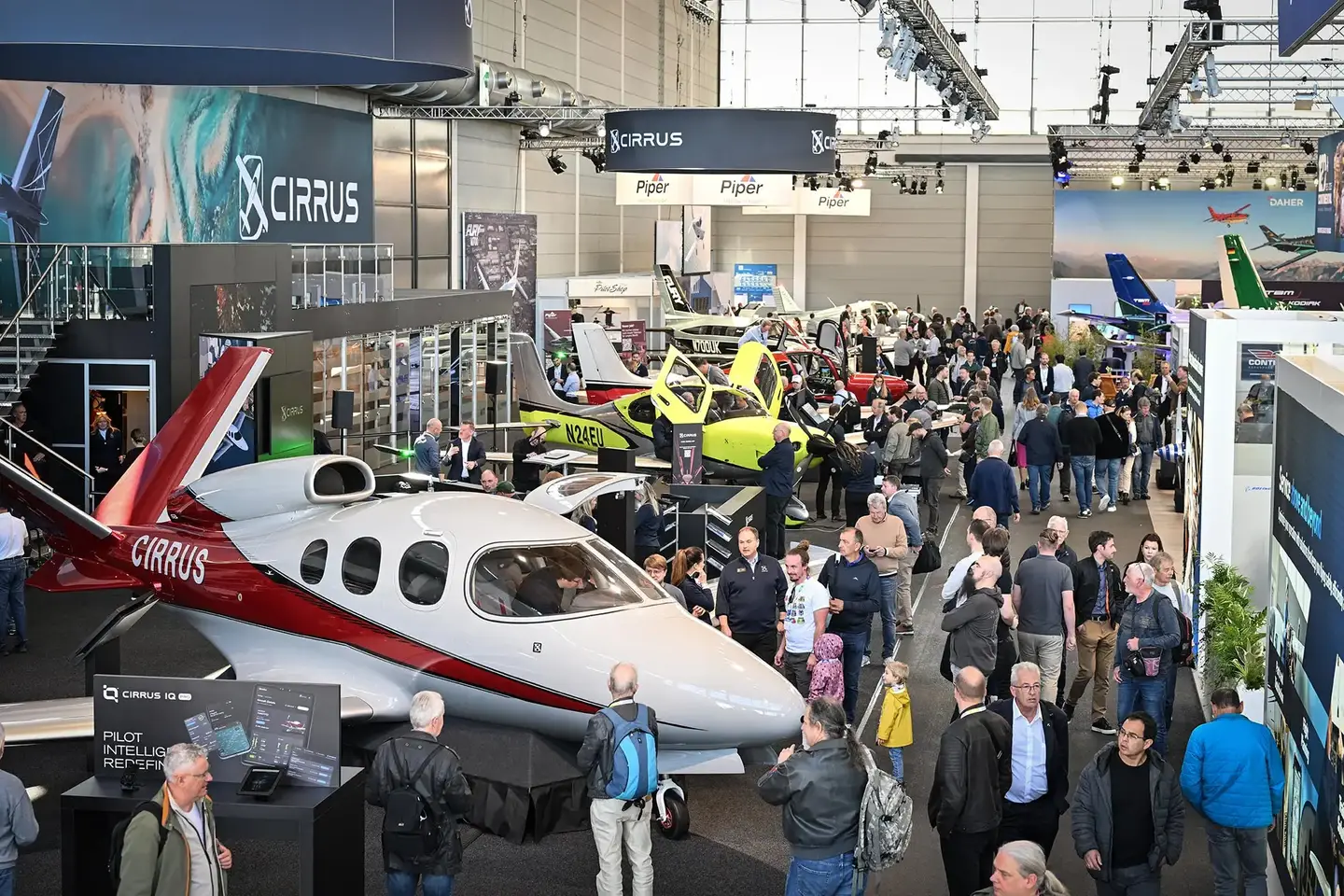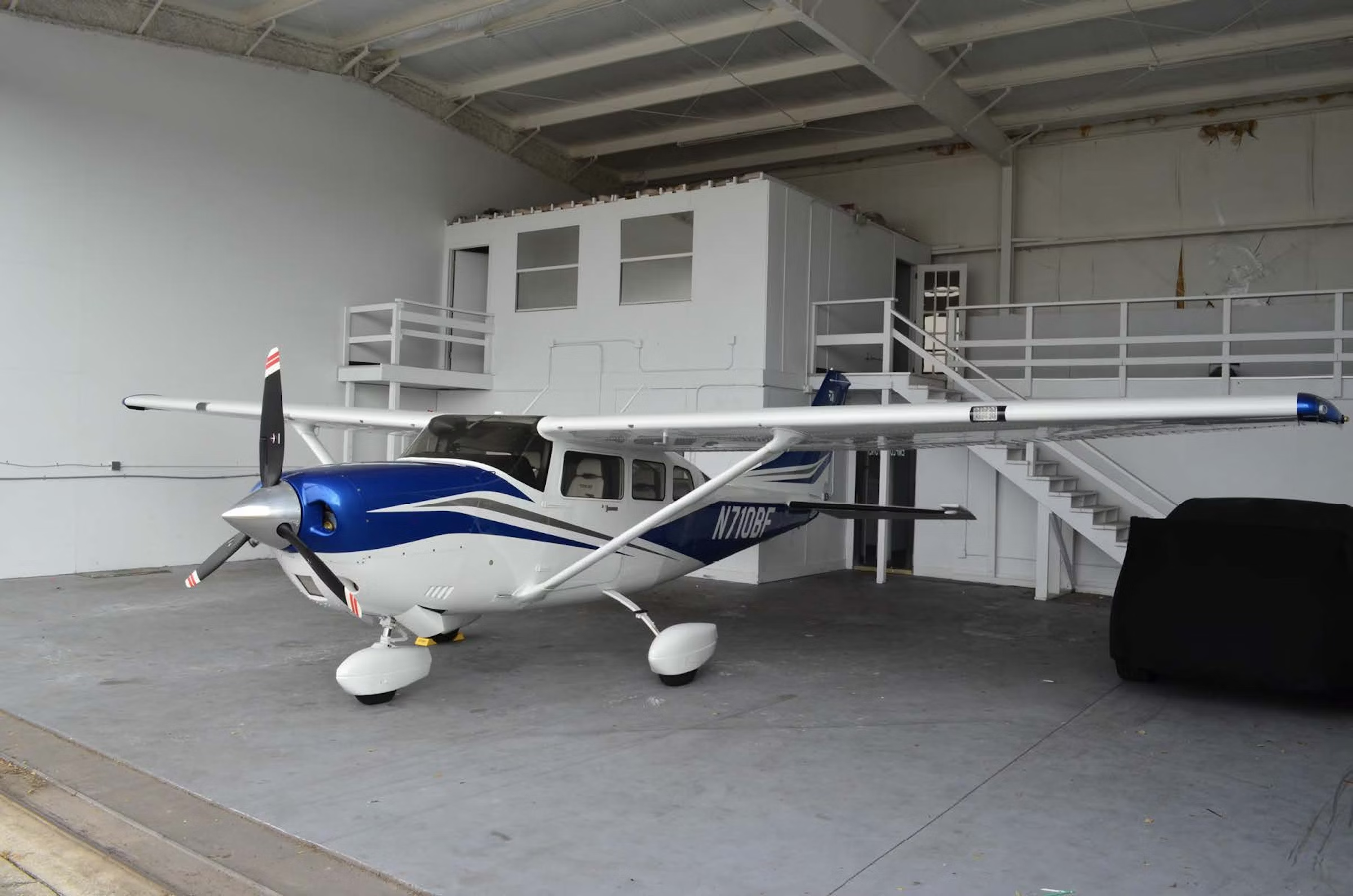
After our story last year on great values in used aircraft "Aftermarket Stars," January 2014 our readers told us they wanted more. So here's Part II. Only this time we'll focus on airplanes that are in our opinion historically underrated.
It's no secret that over the past three decades the prices of new airplanes have risen out of all proportion to the overall cost of living. This means a few different things to us pilots who are looking to buy an airplane. If you want to buy a new airplane, and who wouldn't, you'd better be ready to pay a big premium for the chance to own and fly the latest and greatest. Another effect it has had on the market is in keeping the supply of late-model used airplanes small. An associate of mine recently lost the use of an airplane she had been sharing after the owner moved and sold the late-model Cessna 182 with Garmin G1000 for more than what he'd paid for it.
The effect has been the creation of what is at least a two-tier used market. Airplanes that predate glass cockpits are selling for prices you'd expect to see or slightly higher. Airplanes with flat panels are not depreciating at the same rate as nonglass models, and there are fewer of them on the market, because they were all built in an era when the annual output of North American light GA manufacturers was at best a thousand airplanes. The effect is price stability for late-model glass-cockpit airplanes, which is great for pilots looking to move up but not so great for pilots looking for a bargain.
For example, with a midtime normally aspirated Cirrus SR22 G2 from 2006 still selling for around $250,000 on the used market, a lot of pilots are looking for less expensive older airplanes. The 15- to 20-year period from the mid to late 1960s to the early 1980s represents the vintage of most of these older high-value airframes. The reason is easy. Back then a good year meant light GA airplane makers turned out 10,000-plus airplanes. So airplanes from the '60s, '70s and '80s are responsible for the vast majority of these very desirable models. The good news: There are a lot of them in good to great shape.
The problem is that none of this information is a secret. The most desirable airplanes from the era, Beech Bonanzas and Barons, Cessna Centurions, and Piper Lances and Saratogas, especially those with low hours, are commanding top dollar. They are still a great value compared with late-model wonders and especially with new planes. But for bargain hunters, there are other, less appreciated models that are great values and deserve a long, hard look. Here's a glance at five underrated stars of the aftermarket, from entry-level to the flight levels.
Maule M-Series
One of the great American aviation stories is that of Maule Aircraft, the Moultrie, Georgia, aircraft manufacturer started by B.D. Maule to produce great performing tube-and-rag taildraggers for less. The old adage that you need a program to tell the players is true for Maule, which has produced a staggering number of variants, with different engine options, landing gear configurations, seating layouts and more.
Maules are available on the used market with everything from a 160 hp sport plane up through a turboprop equipped model. The most popular models, the M-6 and M-7, feature a 235 hp Lycoming 540-series engine.
They haul a great useful load, have big access doors and require very little runway to ply their trade. They're not slow airplanes either. While there seems to be some optimism involved in some cruise speed figures often associated with these models, their speeds are comparable with the Cessna 182's. For an airplane that can land in a few hundred feet when flown by an expert, 130 knots or so isn't bad.
Maules are not particularly roomy, but they have great access, with a big barn door in back that can be easily removed (as can the seats) for hauling bulky loads.
They are also great rough-strip performers, and it's not surprising that they are popular with bush pilots in Alaska. How good are they? B.D. Maule famously took off from inside a hangar and became airborne before he exited the hangar door.
Many Maules see duty as floatplanes. In fact, many of the models delivered from the factory as land planes have float kits pre-installed with that use in mind.
A good used Maule MX-7 taildragger will hold its value well, because it is prized by backcountry operators. Buyers can expect to pay between $70,000 and $150,000 for a midtime one with a basic panel and a yearning for the bush. Mid-'80s M5 models with Franklin engines are a particularly good purchase for those owners who are willing to explain to their friends and fellow pilots just what a Franklin engine is.
Specs
Make/Model: 1985 Maule MX-7 235B
Seats (typically): 4
Standard Power Plant: Lycoming O-540, 235 hp
Typical Cost Today: $60,000 to $100,000
Cruise Speed (75 percent power): 130 knots
Range (75 percent power, no wind, with reserves): 760 nm
Useful Load: 970 pounds
Standard Avionics: BendixKing
Usable Fuel: 73 gallons
Takeoff Distance Over 50-Foot Obstacle: 600 feet
Landing Distance Over 50-Foot Obstacle: 500 feet
Popular Aftermarket Options: Floats (amphibious and straight), tundra tires, auto fuel, MT propeller, Aspen flight displays
Photo by Hans Domjan
Grumman Tiger
Built by a number of companies over the years, the AA-5B Tiger, first produced in 1974, is a greatly underrated star in the used market. The airplane was produced in numbers large enough (almost 1,400 over the years) to make it readily available and still at attractive prices. At the same time the design has a slightly exotic appeal to it.
Pilots who fly these singles are often nearly fanatical about them. In my view, their passion makes perfect sense. I flew a beautiful Tiger in the mid-1990s for a couple of years and found it to be a great cross-country airplane for a pilot with a small family, as it has plenty of room for young kids, great visibility thanks to the big glass sliding canopy, and a decent payload.
It is useful to compare it with singles from Beech, Cessna and Piper. The Tiger was slightly less expensive to buy and cost about the same to operate as the competition while boasting substantially better performance.
The Tiger is outfitted with a 180 hp Lycoming O-360 (sadly, there's no fuel-injected version) and gets a lot of performance for the output.
Like today's Cirrus singles, the AA-series of singles were innovative. The Tiger features fixed gear for lower insurance premiums and a modestly sized engine with a fixed pitch prop. The design makes extensive use of honeycomb materials for lightness and stiffness. Also like the Cirrus, the Tiger makes use of differential braking for steering — it has a free- castoring nosewheel with the ability to turn within its own wingspan.
The Tiger is a good performer, cruising at between 135 and 140 knots, which is almost 10 percent better than the competition with about the same fuel burn, though with slightly less impressive takeoff and landing performance.
While the 180 hp Piper Archer and 160 hp Cessna Skyhawk are about as conventional as can be, the Tiger is anything but run-of-the-mill. The canopy gives the airplane kind of a mini-fighter-plane feel. If pure flying fun is a factor in your buying decision, consider that the Tiger has it in spades and much, much more.
Specs
Make/Model: 1976 Grumman AA-5B
Seats: 4
Standard Power Plant: Lycoming O-360, 180 hp
Typical Cost Today: $50,000 to $80,000
Cruise Speed (75 percent power): 134 knots
Range (75 percent power, no wind, with reserves): 555 nm
Useful Load: 1,002 pounds
Standard Avionics: Narco/BendixKing
Usable Fuel: 51 gallons
Takeoff Distance Over 50-Foot Obstacle: 1,550 feet
Landing Distance Over 50-Foot Obstacle: 1,120 feet
Popular Aftermarket Options: S-Tec autopilots, LoPresti speed cowl, Garmin G500 PFD/MFD combo, Power Flow exhaust system
Photo by Scott Slocum
Beech Skipper
By the time the Beech Skipper, a two-seat airplane designed expressly to compete with the Cessna 152 and the Piper Tomahawk, came around, it was already too late. The market was collapsing and the need for two-seat trainers had been filled years earlier. With no market for the new machine, Beechcraft built very few of them over the model's three-year run. While it's not a rare airplane, it's not in big supply.
It's not in big demand either, and that's too bad. The Skipper is a fine little airplane with terrific control harmony, a decent-size cockpit, doors on both sides, fine visibility and nice styling, including an attractive panel that still looks modern some 35 years later. It should be said too that the Skipper was built by Beech, famous for its high-end singles, and the Skipper's build quality reflects that fact.
Like the Cessna 152 and the Piper Tomahawk, the Skipper is powered by a Lycoming O-235 that puts out 115 hp on a good day. So parts and repairs, including overhauls, are readily available and not prohibitively expensive compared with those of more powerful engines.
The performance of the Skipper is comparable to and in some ways slightly better than that of its contemporaries. With two aboard on a warm day, it's less than stellar, but it is certainly not alone in that shortcoming. It's also a surprisingly comfortable airplane for its small stature. While Cessna's 150 was nicknamed the Commuter, the Skipper is in my view a better airplane for such purposes. Then again, with its high-speed cruise figure of just over 100 knots, the Skipper is not a great cross-country transportation airplane — even moderate distances can be a chore. For short regional flights when time is not a factor, the Skipper is a magic carpet.
That said, for pilots looking for a cute, good-flying little runabout, the Skipper fits the bill very nicely. Skippers do come up for sale on a regular basis with prices less than $25,000, and for that you're getting a real gem with a bit of ramp appeal to boot.
Specs
Make/Model: 1979 Beech Skipper
Seats: 2
Standard Power Plant: Lycoming O-235, 115 hp
Typical Cost Today: $18,000 to $25,000
Cruise Speed (75 percent power): 102 knots
Range (75 percent power, no wind, with reserves): 300 nm
Useful Load: 397 pounds
Standard Avionics: BendixKing
Usable Fuel: 19 gallons
Takeoff Distance Over 50-Foot Obstacle: 1,280 feet
Landing Distance Over 50-Foot Obstacle: 1,330 feet
Popular Aftermarket Options: Mounted portable avionics, backup portable navcoms and sun visors
Photo by John Romero
Piper Comanche
For nearly 15 years until the flood that destroyed its factory in Lock Haven, Pennsylvania, in 1972, Piper Aircraft produced one of the most popular models in its history, the Comanche. Available in a variety of versions, the most popular was the 250, with more than 2,500 sold. The Comanche 250 is powered by the Lycoming O-540 six-cylinder engine producing, you guessed it, 250 hp. The Comanche is an all-metal, retractable gear model. It moved Piper out of the tube-and-rag era of Super Cubs and Tri-Pacers and into a truly competitive stance with Cessna and Beech.
The Comanche 250 is a respectable perfomer, though not as speedy as comparable Bonanzas, as efficient as Mooney 201s or as brawny as 210s. With a typical cruise speed of around 155 knots at 14 to 15 gph, the Comanche is a true cross-country airplane, and when outfitted with the 90-gallon auxiliary tanks (a popular and desirable modification), the model has an IFR range of around 900 miles and a 600-pound full-fuel payload.
One early issue with the Comanche was its natural laminar-flow wing, which allowed it better performance than many of its competitors' on similar horsepower. The slick wing got what many consider a bad rap for having less than benign slow-speed handling characteristics, and landings are an acquired skill. The accident record of the Comanche, however, is not much worse in most respects than other retractable-gear singles of similar performance.
Even 40 years out of production, the Comanche has relative value compared with similar vintage Cessna 210s or Beech Bonanzas. It has a respectably comfortable cabin and limited visibility with a variety of dated or updated avionics packages installed. Maintenance costs can be steep. Of concern are recurring airworthiness directives on the gear and fuel cells.
A good quality midtime Comanche can be had for between $50,000 and $80,000, making it a real value for the budget conscious traveler who is willing to invest in the higher upkeep for the reward of a great handling, true cross-country airplane.
Specs
Make/Model: 1964 Piper Comanche 250
Seats: 4
Standard Power Plant: Lycoming O-540, 250 hp
Typical Cost Today: $40,000 to $80,000
Cruise Speed (75 percent power): 155 knots
Range (75 percent power, no wind, with reserves): 900 nm
Useful Load: 1,210 pounds
Standard Avionics: BendixKing
Usable Fuel: 90 gallons
Takeoff Distance Over 50-Foot Obstacle: 1,650 feet
Landing Distance Over 50-Foot Obstacle: 1,420 feet
Popular Aftermarket Options: Three-blade McCauley prop, one-piece windshield, S-Tec autopilots, Garmin navigators, inflatable door seals
Photo by Ryan Lunde
Cessna Citation I and I/SP
For would-be jet-setters looking for their first turbofan, the natural choice is the Cessna Citation I model 500/501, the first turbofan bizjet and still a popular choice among the owner-flown crowd (a nice club to belong to, we'd like to stress). Many owners elect to fly their single-pilot Citation I with a crew of two.
The I/SP is the single-pilot conversion, though many Citation I's have been upgraded to single-pilot use through aftermarket mods.
The Citation I is a big bizjet by today's entry level standards, and its cabin is tight but livable.
To call the Citation I underrated is no stretch. Even though it was once a prime-time player in the light bizjet market, newer light jets with more efficient engines and better aerodynamics have long since passed up the original Citation.
With nearly 700 of them produced over the airplane's decade-plus run, the Citation I is readily available on the used market at prices that might shock you. For well less than a half-million dollars, you can get a Citation I, some with desirable aftermarket mods. Of course, for that price you're also getting built-in big future bills in the form of engine maintenance.
The real value in the Citation I/SP market can be found in airplanes that have already been modified. A number of modifications from Sierra Industries target the early Citations and, for a price, change the airplane from an outdated older jet that's hard to justify to a very solid performer. Depending on the modification chosen, you can get everything from an airplane with a good boost in performance to one with brand-new, fuel-efficient Williams FJ44 engines that replace the antiquated Pratt & Whitney JT15Ds on the original and lose the thrust reversers in the process.
For around $2 million, buyers can purchase an upgrade to a 400-knot, seven-passenger single-pilot airplane with a better than 1,500 nm range. Those figure make the Cessna Citation I/SP comparable to the latest light jets for a lot less.
Specs
Make/Model: 1976 Citation I
Seats: 2+6
Standard Power Plants: Pratt & Whitney JT15D
Typical Cost Today: $400,000 to $800,000
Cruise Speed: 352 knots
NBAA IFR Range: 948 nm
Useful Load: 4,597 pounds
Standard Avionics: Cessna ARC; Most have been upgraded to Collins, Sperry and BendixKing.
Cabin Height/Width: 4.3 feet/4.9 feet
Takeoff Distance: 2,930 feet (sea level)
Landing Distance: 2,017 feet
Popular Aftermarket Options: Avionics upgrades, Sierra Industries Longwing mod, Williams FJ44 engines (Sierra's Eagle mod package)
Photo by Paul Bowen
Get online content like this delivered straight to your inbox by signing up for our free enewsletter.

Sign-up for newsletters & special offers!
Get the latest FLYING stories & special offers delivered directly to your inbox






